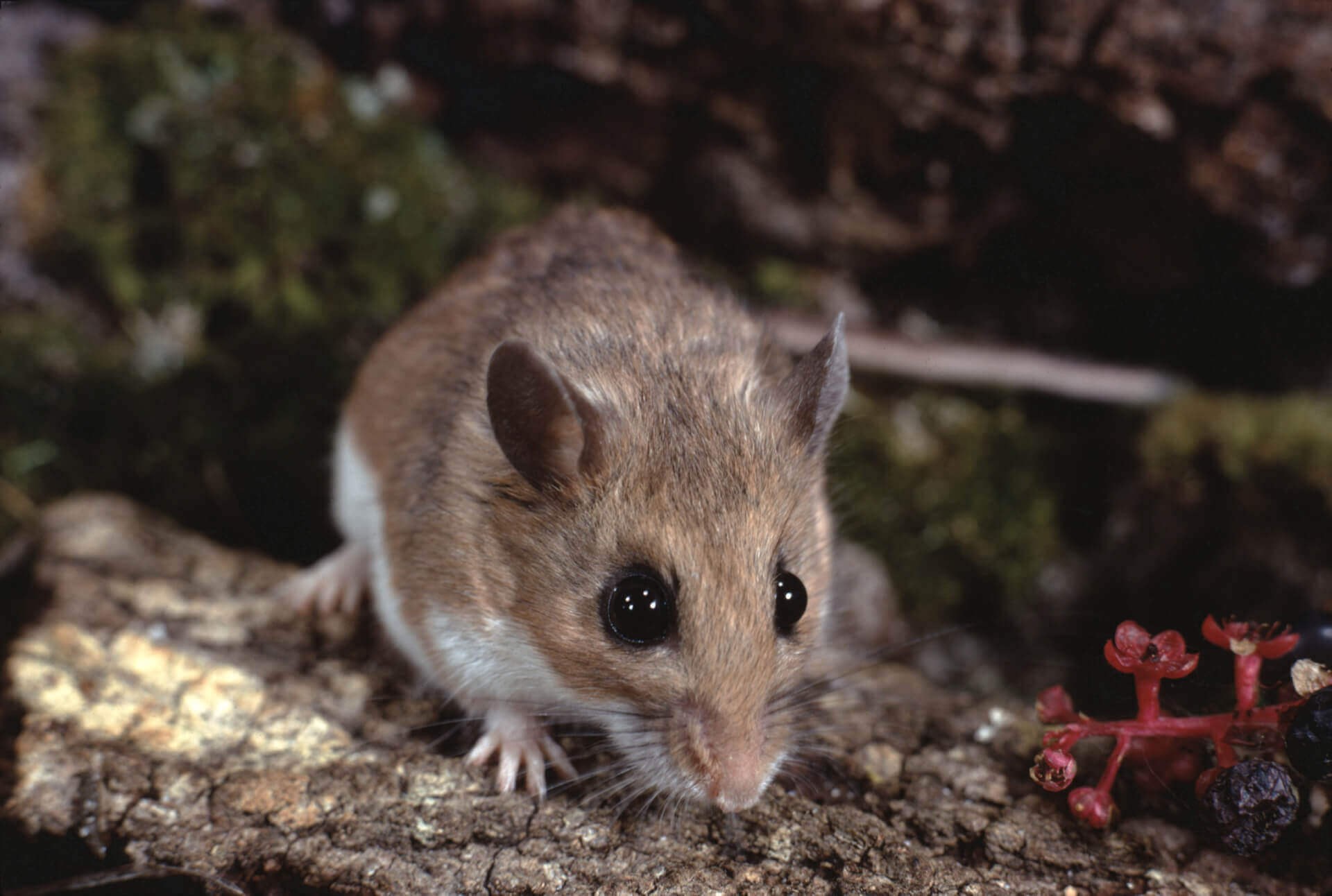White-Footed Mouse Facts & Information
Everything you need to know about white-footed mice
what do White-footed Mice look like

White-footed mice (also known as wood mice) are a common rodent found in the northeastern United States. These mice are named for their white feet which contrast with their dark gray coat. They are very small, only 3.5-4 inches long not including the length of the tail, which is often as long as the rest of the mouse’s body. They are primarily nocturnal which is why you will hear scuttering in your walls, ceilings, or attic at night. They can multiply quickly so if you do hear signs of mice, best to call in a mouse exterminator immediately.
White-footed mice have different breeding seasons depending on where they live. In the northern parts of their range, they breed in spring and late summer. In southern parts of their range, they can breed year round. Females can begin to have babies when they are 44 days old. Females are pregnant for 21 to 28 days, but they occasionally are pregnant for longer as they practice “delayed implantation”, or waiting for good conditions to give birth. Females can have 2 to 4 litters a year, each containing 2 to 9 young. Young are born blind, and their eyes usually open about 2 weeks after birth. The young white-footed mice are nursed by their mother for about 3 weeks in total. Young white-footed mice are born blind, naked, and helpless. Their eyes open at about 12 days of age, and their ears open at about 10 days. Females care for and nurse their young in the nest until they are weaned. Soon after that, the young disperse from their mother’s range. If the young or the nest are in danger, female white-footed mice carry their young one at a time to a safer location.Not the mouse you have?
White-footed mice have different breeding seasons depending on where they live. In the northern parts of their range, they breed in spring and late summer. In southern parts of their range, they can breed year round. Females can begin to have babies when they are 44 days old. Females are pregnant for 21 to 28 days, but they occasionally are pregnant for longer as they practice “delayed implantation”, or waiting for good conditions to give birth. Females can have 2 to 4 litters a year, each containing 2 to 9 young. Young are born blind, and their eyes usually open about 2 weeks after birth. The young white-footed mice are nursed by their mother for about 3 weeks in total. Young white-footed mice are born blind, naked, and helpless. Their eyes open at about 12 days of age, and their ears open at about 10 days. Females care for and nurse their young in the nest until they are weaned. Soon after that, the young disperse from their mother’s range. If the young or the nest are in danger, female white-footed mice carry their young one at a time to a safer location.Not the mouse you have?
how did i get white-footed mice
White footed mice like dry, warm forests and brushy areas. They are highly adaptable and can find places to live throughout New Jersey, New York, Pennsylvania, Delaware, and Connecticut whether it be in the suburbs and or on farms. They only need a hole the size of a dime to squeeze their way in and they often do that to find a place that will provide shelter from the colder months. Homeowners often don’t notice nearby infestations because white footed mice live in hidden nests. Some of their favorite locations include hollow trees and abandoned bird nests or burrows. Their nests typically feature a lining of soft grass, fur, leaves, feathers, or moss. These mice can also build nests inside homes, though. Attics, chimneys, and basements are common indoor white footed mouse habitats. The pests’ waste collects inside their messy nests, and the food caches they create attract insects and other rodents into the house.
what Problems do white-footed mice cause
In the wild, the white-footed mouse will usually die in about 2 to 3 years, but in your nice, comfy home or business, they can live up to 5 years! White-footed mice are generally not social animals with the exception of breeding season – March to October. Since they can have 2 to 4 litters of 2 to 6 mice, that can add up to an infestation pretty quickly making mice treatments necessary. Mice in general have excellent hearing and sight so they know you’re coming and will hide in plenty of time so make sure to bring in a mice control expert. They are known carriers and spreaders of numerous serious human diseases including Hantavirus, can trigger asthma, and even play a role in spreading Lyme disease.
how do i prevent white-footed mice
The single most important preventive measure you can take to keep white-footed mice away is to have professional exclusion work done by an expert. Cracks or crevices in the foundation and walls of your house should be sealed so those entry points are blocked. The fall season, when the white-footed mice are seeking shelter from the cold, is an especially good time to have an inspection done. Mice can enter by squeezing their way through cracks as small as 1/4-inch in diameter, so blocking foundation cracks with a masonry repair material, and inspecting joints around windows and door sills for cracks that might allow mice to enter will help keep them out.
Make sure weather seals along the bottom edges of garage doors are in good shape. If your garage is insulated, it may become a cozy home for a rodent. Check your attic, as well, since mice love the warmth of insulation. Consider upgrading to attic insulation that has been treated with natural borates that can help control many different kinds of pests. You should also transfer dog and cat foods into sealed, airtight storage containers immediately after buying them. Mice love dry pet foods so store them in tightly sealed containers well above the floor.
Make sure weather seals along the bottom edges of garage doors are in good shape. If your garage is insulated, it may become a cozy home for a rodent. Check your attic, as well, since mice love the warmth of insulation. Consider upgrading to attic insulation that has been treated with natural borates that can help control many different kinds of pests. You should also transfer dog and cat foods into sealed, airtight storage containers immediately after buying them. Mice love dry pet foods so store them in tightly sealed containers well above the floor.
WHY WESTERN for white-footed mouse control
We’re passionate about controlling mice in your home or business because we live and work here – it’s our neighborhood, too. With our almost 100 years of experience keeping homes and businesses in Connecticut, Delaware, New Jersey, New York, and Pennsylvania safe from pests, Western has the experience you can trust.
100% Satisfaction Guarantee
24-Hour Guaranteed Response
Board Certified Entomologists
Need help with white-footed mice?
GET MY QUOTE
